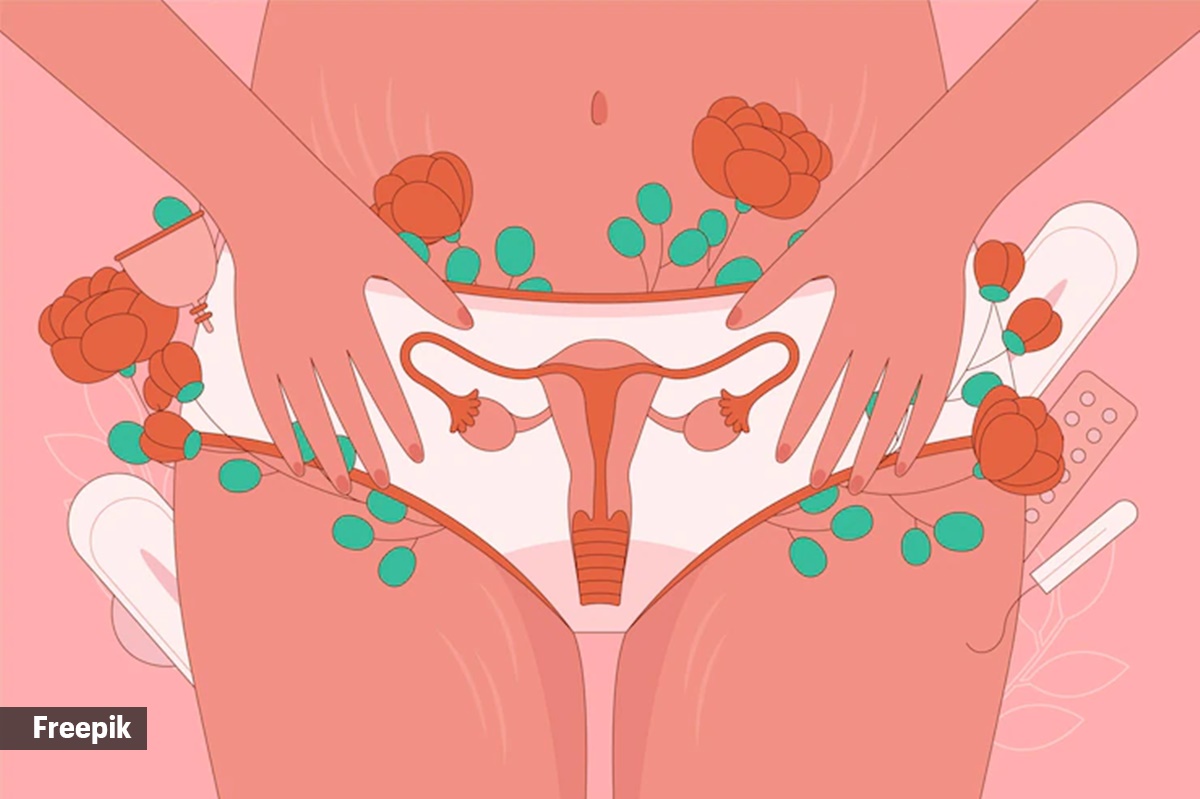📣 For more lifestyle news, click here to join our WhatsApp Channel and also follow us on Instagram
Women, these tips will help you differentiate between normal and abnormal vaginal discharge
A change in texture, smell, colour and amount of discharge can indicate a problem.
 While some people produce lots of vaginal discharge, others produce small amounts. (Source: Freepik)
While some people produce lots of vaginal discharge, others produce small amounts. (Source: Freepik)Vaginal discharge is a natural and normal process, say experts, but any changes to your discharge can be a sign of infection. Usually, vaginal discharge appears clear, white or off-white fluid-like, and is made up of cells and bacteria. Such discharge “plays a housekeeping role in the cervix and vagina as it helps clean these sites and get rid of bacteria”, said Dr Jagriti Varshney, an obstetrician and gynaecologist. The expert, however, added that there are separate characteristics for normal and abnormal vaginal discharge, and a change in texture, smell, colour and amount of discharge can indicate a problem.
“A normal vaginal discharge is thin, clear, has no bad odour, does not cause itchiness or irritation and usually occurs two weeks before menstruation when the ovulation occurs. However, the discharge can increase in amount if you are taking oral contraceptive pills,” she told indianexpress.com.
However, if there are any, changes such as the following, then one should consult a doctor:
*Vaginal discharge which is chunky or involves itching may mean you have an infection.
*Dark yellow, brown, grey, or green discharge may indicate an infection.
*A fishy or foul smell from the discharge is a cause for concern.
*Sudden changes in the amount of discharge may mean something is wrong.
According to Dr Varshney, other symptoms associated with abnormal vaginal discharge are painful intercourse, frequent bouts of urination, painful urination, tenderness in the pelvic region and it may also cause blisters, bumps and swelling in the vaginal area.
There are a number of infections that can cause vaginal discharge to become abnormal:
 Usually vaginal discharge appears clear, white or off-white fluid-like, and is made up of cells and bacteria. (Source: Freepik)
Usually vaginal discharge appears clear, white or off-white fluid-like, and is made up of cells and bacteria. (Source: Freepik)
*A yeast infection occurs when a specific fungus called candida grows in the vagina. It causes the discharge to turn thick and cheese-like. It may swell the vagina as well and cause persistent itching and painful sex. Such infection is treated using antifungal medications.
*Trichomoniasis is a sexually transmitted infection (STI), one can get from having sex with an infected person. It turns your vaginal discharge green, yellow, or grey in colour, and the texture becomes frothy. It is caused by a parasite and can be treated with antibiotics.
*Bacterial vaginosis (BV) happens through sexual contact but not all the time. People with BV have gray or white discharge, with a foul-smell.
*Chlamydia and gonorrhea are common STIs which can be treated through antibiotics. One can have a cloudy, green, or yellow discharge in this case. It may spread if left untreated.
It can also happen through non-infectious things like leaving a tampon inside your vagina, detergents, soaps, sex toys, condoms, or because of lower levels of oestrogen causing atrophic vaginitis during menopause.
The best way to keep your vagina healthy as per the expert:
*Avoid usage of perfumed gels, soaps, wipes or other irritating feminine hygiene products
*Not douching or washing inside the vagina
*Wiping vagina from front to back to prevent bacteria to get into the vagina
*Not wearing tight undergarments, bathing suits, leotards or sweaty clothes for long durations
*Regularly changing your tampons and sanitary napkins during menstruation
📣 For more lifestyle news, follow us on Instagram | Twitter | Facebook and don’t miss out on the latest updates!
📣 For more lifestyle news, click here to join our WhatsApp Channel and also follow us on Instagram





- 01
- 02
- 03
- 04
- 05






















